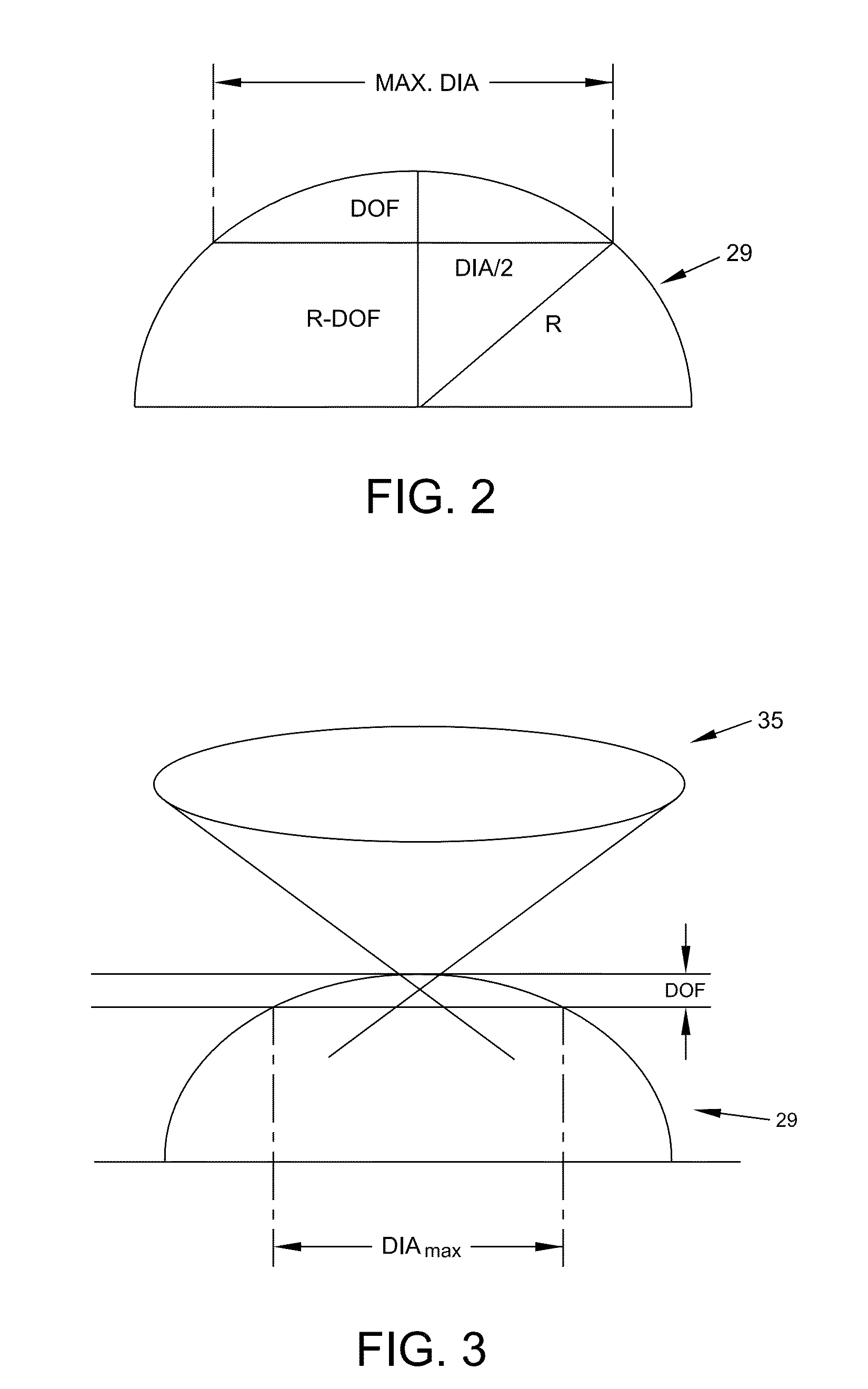Method and apparatus for determining eye topology
a topography and eye technology, applied in the field of optical topography measurement methods and apparatuses, can solve the problems of insufficient and accurate information, complicated measurement of eye topology, and loss of information,
- Summary
- Abstract
- Description
- Claims
- Application Information
AI Technical Summary
Benefits of technology
Problems solved by technology
Method used
Image
Examples
Embodiment Construction
[0055]FIGS. 1 through 6 are useful in understanding the prior art and the limitations of the prior art when applied to determining, with accuracy, the topography of the corneal and scleral regions of any eye, particularly when the information is to be used in the manufacture of scleral lenses. It is difficult to image surface regions, such as the sclera region of the eye with its steep curvature. FIG. 1 depicts an eye 29 in cross section. When an incident light beam 301 from a source impinges perpendicularly upon the surface of the cornea 31 and retina 32, it is reflected and scattered back toward the imaging optics as indicated by reflected light beams 30R and 30R′. However, when an incident light beam 341 impinges upon the steep area of the sclera 33, most light is reflected and scattered away from the imaging optics as a directly reflected beam 34R because the angle of incidence a must equal the angle of reflection. Scattered light appears as quasi-directional scattered beams 34Q...
PUM
 Login to View More
Login to View More Abstract
Description
Claims
Application Information
 Login to View More
Login to View More - Generate Ideas
- Intellectual Property
- Life Sciences
- Materials
- Tech Scout
- Unparalleled Data Quality
- Higher Quality Content
- 60% Fewer Hallucinations
Browse by: Latest US Patents, China's latest patents, Technical Efficacy Thesaurus, Application Domain, Technology Topic, Popular Technical Reports.
© 2025 PatSnap. All rights reserved.Legal|Privacy policy|Modern Slavery Act Transparency Statement|Sitemap|About US| Contact US: help@patsnap.com



